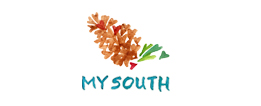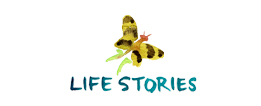Last summer, we decided to make a trek into the Mississippi Delta for one of the road trips that have begun to signify our summertime experiences. We made a couple of stops along the way to explore, but our true destination was Indianola, in Sunflower County, the town B.B. King considered home. There, he returned to perform for his namesake festival each year and is now memorialized at the B.B. King Museum & Delta Interpretive Center. We wanted to see and learn and experience this legendary Mississippi musician who was so loved by the world – there, where he had been raised. What we found was a world-class experience of music chronicling the part this iconic musician has played in it. Our visit to the B.B. King Museum did not disappoint, and looking back, I’m still enamored by its retelling of the man who’s tonic was the Blues.

Archive for reviews

Dead poets. Cryptic messages found in old book shops. Underground publications tacked to light poles. Faces blacked out in old black and white photographs. Mysterious hieroglyphs. Collages of artifacts and inspiration.
The world of The Wander Society by Keri Smith is a mysterious one with a call to explore the unplanned and the unexpected. The book begins with an experience in a book shop where the author finds a dog-eared copy of Walt Whitman’s Leaves of Grass, and discovers a hand-written reference to “the wander society” with the directive, “Solvitur Ambulando” — Latin for “it is solved by walking.” In a short 175 pages, Smith describes her pursuits to discover more about this mysterious organization, encounter thinkers and writers who have espoused the precepts it embodies, and develop the practice of wandering herself.

Reaching back to some of the most prominent literary figures of the past several centuries, and including a great many naturalist authors and thinkers, The Wander Society offers a kind of “suggested reading” list for those interested in the pursuit of meandering and the transcendentalist approach to living connected to the present moment and the natural world of one’s surroundings. Part arts and craft instruction and part camping handbook, the book also includes an eclectic mix of how-tos, like how to find a “talisman,” how to pack for wandering, how to make a “wander station”, and how to carve a wandering stick. Beyond that, Smith offers a collection of wandering exercises to help Society members notice their surroundings in new ways, research and document their environment, and grow in their tolerance for unscheduled exploration. In addition to the instructions and literary inspiration, The Wander Society treatise also includes a subplot of chance discoveries of artifacts and handmade zines left by wanderers before, clues to finding wanderer hang-outs, and even a mysterious professor researching the organization.



Whether the existence of The Wander Society as a secret organization is factual or just the very creative product of Keri Smith’s vivid imagination and curiosity, the effect is the same. It’s a mesmerizing collection of visual images and ideas to inspire the reader to forge connections with the physical world around us, and indulge in the discipline of letting go of time and schedule constraints. Although I’m not a subscriber to the book’s suggestion that those stops along the wanderers path and the mystic talismans found there should be elevated to a sacred status, I loved its premise of setting aside opportunities to simply allow ourselves to go where the next step takes us. As we’re surrounded with what seems like a thousand channels and devices feeding us information, each one has an ability to schedule our every moment while removing nearly every element of uncertainty or surprise from our radar. The result is that the value of quietness, wonder, and exploration are sometimes overlooked.
This concept of wandering played a wonderful role in some of our summer together this year… even down to the fact that we began to rename some of our experiences as adventures! Although we didn’t spend much time wandering by foot in this Mississippi heat, we enjoyed several automobile adventures, giving ourselves the freedom to take unexplored highways and roads through scenery and towns we’ve never visited. We set aside times to let the French concept of “flanerie” govern our travels, stopping from one town to the next, wherever an interesting building or shop or hand painted sign captured our attention. I don’t know if that makes us unofficial members of The Wander Society, but I know it helped us make memories and find inspiration in the most unlikely of places. I’ve been wandering in a different way through some of the many photographs I took on our adventures, and I can’t wait to share some of the sights and inspiration from our wanderings. Stay tuned for upcoming posts to the sojourn field guide, my Frog Kisser category archiving some of our backroads, rural adventures, and wanderings.

The autumnal equinox arrives tomorrow, and although you wouldn’t know it by the temperatures in Mississippi, that marks the official end of summer. The children and I had some family goals for reading this summer that were a little too ambitious for our travel schedule, but each of us managed to contribute several completed books to our Montgomery Summer Reading List. The kids were quick to insist that I include my own book selections on the list as well. Like me, each of the children really do like to read, but sometimes the fun gets dampened if the reading is some kind of “assignment.” I think they wanted to be sure this was actually a fun family activity and NOT some subversive summertime homework exercise!
In addition to adding some purely fun mysteries to the Summer Reading List, I also read a few challenging books — great books that challenged me to think beneath the surface, to look critically at the culture around me, to wonder at the power of storytelling, and to be moved by the experiences of other humans. Several selections focused on events and the political and social climate of some of my coming-of-age years, the years that are too recent to show up in any of the textbooks in school. As we close out summer, I wanted to share a few posts with thoughts on some of the books I would definitely recommend you add to your reading list.


Nixonland: The Rise of a President and the Fracturing of America
by Rick Perlstein
 I started 2016 wanting to read about politics and history — maybe because the presidential contest was already in such full swing. I was particularly interested in the 1960s and 1970s, and I had been re-reading several books about the story of Watergate by Bob Woodward, including All the President’s Men, The Final Days, and his tracing of Watergate’s impact through five subsequent presidencies in Shadow. My Scribd e-reader subscription offers up suggested reading based on your book history, and Rick Perlstein’s book, Nixonland, popped up. I decided to take a look.
I started 2016 wanting to read about politics and history — maybe because the presidential contest was already in such full swing. I was particularly interested in the 1960s and 1970s, and I had been re-reading several books about the story of Watergate by Bob Woodward, including All the President’s Men, The Final Days, and his tracing of Watergate’s impact through five subsequent presidencies in Shadow. My Scribd e-reader subscription offers up suggested reading based on your book history, and Rick Perlstein’s book, Nixonland, popped up. I decided to take a look.
The book was published in 2008, and was listed as a “notable book” by the New York Times and a number of other publications. As the subtitle suggests, Nixonland is mainly the story of Richard Nixon’s political rise from the somewhat-maligned and disrespected role as Eisenhower’s Vice President to his role as the eventual President of the United States and early architect of the modern Republican Party — plus, many of the bumps in between. It is also, however, an amazingly detailed account of so much of the racial unrest that occurred during those decades, the anti-war movement, the transformation of the Republican and Democratic parties as their souls and public images virtually switched, and ultimately, the dividing of America along the political rift these realities created. I’ve seen no better account identifying the roots of today’s divisive and deadlocked political culture.
Nixonland is not an easy or a short read. It took me a big part of the summer to get through it because of how much detail the author includes. There was a lot to absorb. However, it kept my interest the whole time because of how the author dramatically weaved together so many real-life stories along with Perlstein’s poignant conclusions. It is probably the best and most comprehensive book I’ve ever read chronicling the politics and social issues of the 1960s and early 1970s. What struck me about the book was how much of the political climate mirrors what we see today. Perlstein very effectively traced seeds of our current polarized culture through these very turbulent and formative years in modern American society. So many players in modern politics pop up in the book — presidents, strategists, and politicians who dominate our news stream today. It was amazing and eye-opening to see the dots connected between so many playmakers in the public sphere.
In many ways, Nixonland was a sad book to me. It definitely turned the mirror on American culture and so much of the social issues that are still left unresolved. Reading accounts of the Watts riots, segregation, and the very divided government response alongside today’s Twitter accounts of the Black Lives Matter movement and continued racial tensions now 50 years later was very disheartening to me. To be facing some of the same issues so many years later feels like an indictment on my generation. And, race was just one social issue that emerged. Poverty, trust in government, the specter of war, the role of faith in the public sector, and the emergence of media as a catalyst and impactor of public opinion are all areas from that era that mirror today’s climate.
Perlstein ends his book at Nixon’s landslide victory for re-election in 1972, even as the foreshadowing of the Watergate fallout was looming near. He points out that just 20 months after a routing of his political opposition, Nixon would become the only U. S. President to resign the office in disgrace. Perlstein also ended with an evaluation of “Nixonland’s” logical trajectory — the polarized vitriol we see on every channel today.
“In this book I have written of the rise of two American identities, two groups of Americans, staring at each other from behind a common divide, each equally convinced of its own righteousness, each equally convinced the other group was defined by its evil.
What Richard Nixon left behind was the very terms of our national self-image: a notion that there are two kinds of Americans…. and both have learned to consider the other not quite American at all.”
I highly recommend this book as a necessary read for those like me, who were barely born during these pivotal years in American culture, and yet have had so few opportunities to learn about them in ways that draw the threads tying the last decades of the 20th century to today. Nixonland, though a challenging read, also served as an inspiration for me to engage more critically in this year’s election process, to seek out a variety of voices telling the tales of social issues in our nation, and to re-engage with my own thoughts and beliefs about the nature of the democracy I’m handing down to my children.

We were happy to see Ballet Memphis perform in Starkville last night as part of the Mississippi State University Lyceum Series. We have seen the company in a couple of traditional productions in Memphis, but last night’s pieces were less what you expect from traditional ballet. They were more experimental with interesting variations of costumes, disruptions to the typically fluid ballet choreography, and a more abstract form of storytelling. I think what we all enjoyed most was the unusual musical selections chosen for the dances. One of the things I love about Ballet Memphis is the diversity of the company, and I think that lends itself to some very interesting storytelling. The pieces we saw last night were clearly rooted in Southern culture, and used music that is very indicative of the South with combinations of traditional hymn-like religious music, the negro spiritual sound, a bluegrass feel and even some voice sound recordings of interviews and old gospel sermons. One of the pieces exclusively used Roy Orbison songs — not your typical score for a ballet performance. The consensus favorite with my crew was called “The Darting Eyes,” and was inspired by traditional Mississippi River baptisms through many eras. It was a really beautiful blending of an almost ghost-like historical imagery with the sacred rite of baptism so much ingrained in Southern culture.
I loved that a non-traditional performance like this (absent of the frilly tutus Baby Girl loves about her own ballet performances) could provoke conversations with all three of my children. It was amazing to see the fresh eyes through which they viewed the performance. I’m so grateful we’ve had the chance to see this wonderful company perform several times. Today’s Letter to My Daughter was inspired by the unexpected combination of music of ballet traditions we saw last night. I want to encourage my kids (and myself) to have the courage to choreograph our daily dances to our own music — no matter how unexpected.
I saw last week that the book Just Kids by Patti Smith won the National Book Award for non-fiction this year, and it made me think about the book again. I enjoyed reading it earlier this year, and have seen a few great interviews with Smith about it as well. It’s been a while since I’ve written about books, so I thought I would share a few thoughts about this one.
Just Kids is a poignant memoir of the love affair and life-long friendship between Patti Smith and Robert Mapplethorpe, two artists who became symbols of the alternative art culture of the early 1970s and whose iconic status in greater pop culture continues today. The staccato prose of the writing took some getting used to, and the rapid pace of Smith’s descriptions of encounters with poets and authors and musicians was at times dizzying. I really enjoy the stream of consciousness style, however, and I suppose her approach to recounting the pair’s activities matched the random nature of the times and the evolution of that particular sub-culture.
I’ll have to admit that there were a lot of names in Just Kids that I didn’t recognize. I’m just barely a child of the 70s and I guess my younger cultural experiences didn’t follow the same circles as those of the Hotel Chelsea scene. There were many names I knew I should recognize and felt a little tuned out because I didn’t — lost my official “artist” badge in a couple of instances, I’m sure. In fact, there were times when I felt I’d fallen into some giant cocktail party game of name-dropping. But, the people who took up the volume of Smith’s remembrance emerged as “characters” I learned in a new way.
I was quite enamored by the story as a whole and particularly by the ebb and flow of the relationship between Smith and Mapplethorpe. It was an interesting study of muse and artist, of friendship, of family created out of common loves and of the weathering of change. And of course, the emergence of both the artists’ “voices” in prose, photography and song is unique and compelling.
The way Smith described the end of Mapplethorpe’s life, her continued protectiveness of him and his vision, and her process of letting him go was very moving for me. It spoke volumes about life lived entwined with another person and the realities of how that type of relationship changes by necessity over time. The poignancy of the last chapters of their relationship and Mapplethorpe’s death perhaps highlight some of the ways I was disappointed with the book. The close of their story made me cry. It moved me. It showed me her grief at losing the person who was so influential in her life. It made me feel her grief over how situations change–both for good and bad. But, in many ways it was the first time I felt I really saw her in the book.
For much of the book, I felt as if Smith was painting a picture for me. Yes, that’s partly what a memoir is, but it seemed she was trying to portray a contrived image of herself. It was clear in much of the book that her goal was to emphasize Mapplethorpe, but her perspective and role in his life would have gained greater credibility from more of that rawness I saw at the end.
For me, she didn’t answer the “oprah question.” You know, the question every onlooker would ask. She didn’t seem to address with any depth her own feelings about the delving of Mapplethorpe into the gay culture he became so synonymous with. They were lovers. And young lovers at that. At a time in their lives when both their artistic visions and their forays into adulthood were very new. That’s a very powerful relationship. The woman who described her own fantasies of being Baudelaire’s muse seemed completely detatched from the fact that her lover was hustling in male prostitution. She seemed almost indifferent to his decision to pursue a homosexual lifestyle. For someone who throughout the rest of the book infused so much meaning into small details and chance encounters, it seemed just a little too cosmopolitan. I was amazed by her acceptance of Mapplethorpe’s choices, and I recognize that acceptance as one thing that made their relationship so enduring and impactful for the two of them. But, I wanted to see her care. I wanted to see her work through the emotions of that change in their relationship. It would have brought a very human perspective to the “starting gun” affect his work continues to have in our culture.
All in all, I really enjoyed Just Kids as a memoir, as a record of a very intriguing time and a very intriguing art “scene.” I just wish that in her zest to show me Mapplethorpe, Smith would have shown me more of herself as well.
![]()
 Hello & welcome! I’m Haley Montgomery, and I’m the designer and owner of Small Pond Graphics. I sometimes fancy myself a frog kisser— a documentarian coaxing poignant moments from unexpected places. This blog has evolved from those moments.
Hello & welcome! I’m Haley Montgomery, and I’m the designer and owner of Small Pond Graphics. I sometimes fancy myself a frog kisser— a documentarian coaxing poignant moments from unexpected places. This blog has evolved from those moments.
The small Pond FIELD GUIDE is part diary, part sketchbook, and part wish list – an archive of ordinary wonders. For years, this space has housed my stories – creative ideas, vintage inspiration, our forays into curious places, and the simple artifacts of quiet of conscious living. Through watercolor, photography, and illustrated tales, these pages uncover the blessing of ordinary days and the wonder found in authentic places and pursuits.
I invite you to open the boxes.
Peek into the drawers.
Rustle through the pages.
I’m honored to have you here.
![]()
![]()
![]()
![]()

© Haley Montgomery for Small Pond Graphics.
All rights reserved.
Sharing of photos and images from this site is acceptable, provided that proper crediting links are included. No downloadable content may be distributed without written permission. All art is a gift forward. Please support designers, creators and makers everywhere by respecting copyright ownership of creative property.

NEED A FROG KISSER?
Phone: 662.312.4001
Contact Haley to dive in















